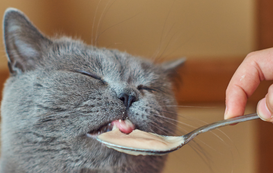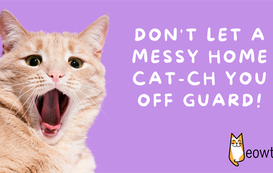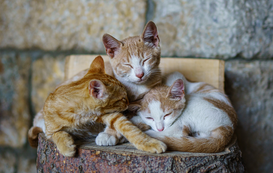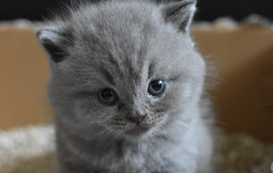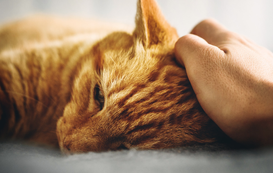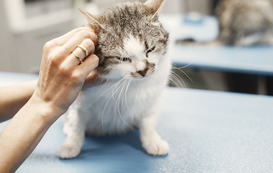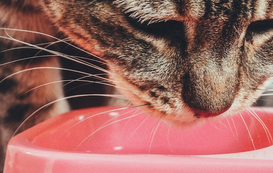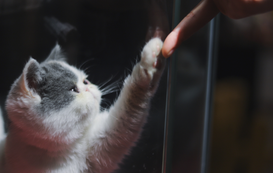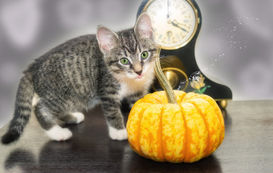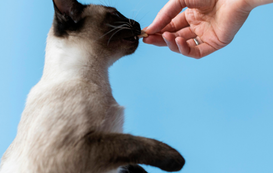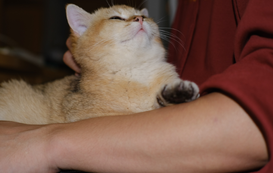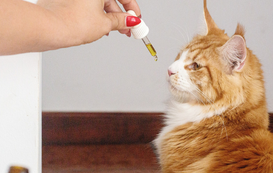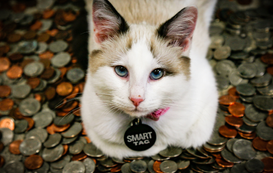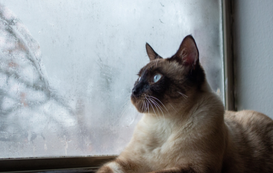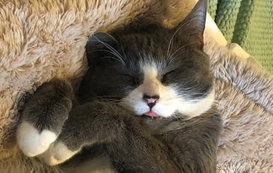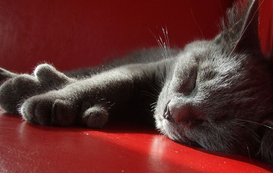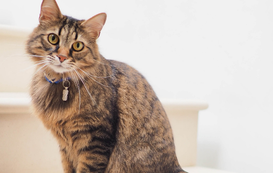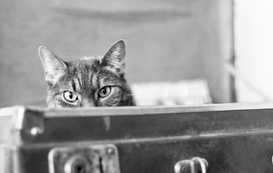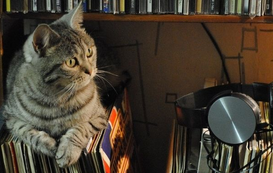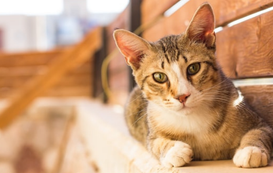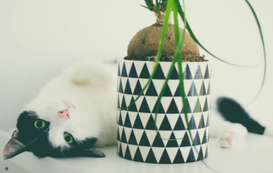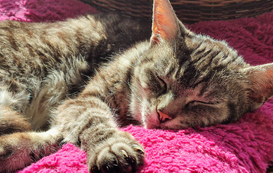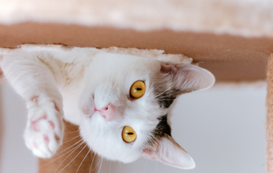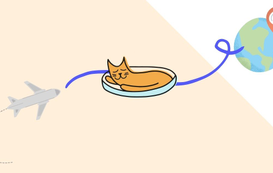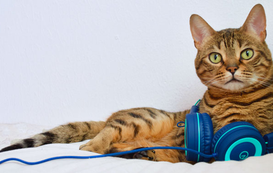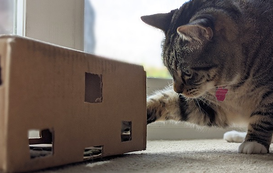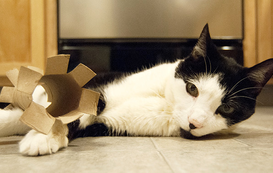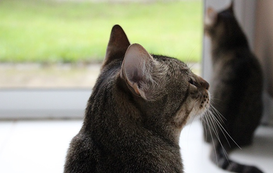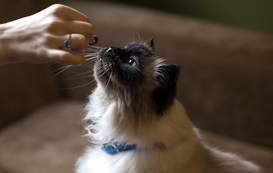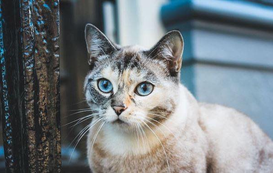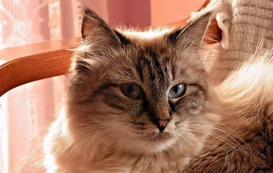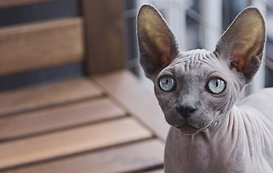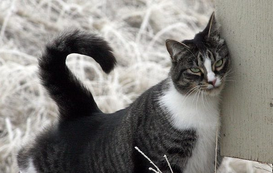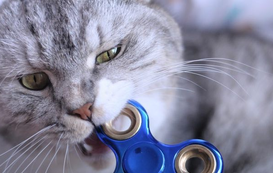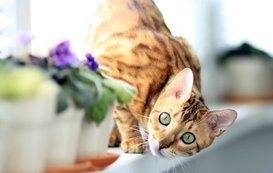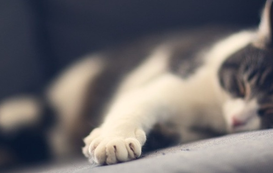- Home
- Cat Sitter Blog
- Cat Behavior
- Tips to Help Stop Destructive Scratching
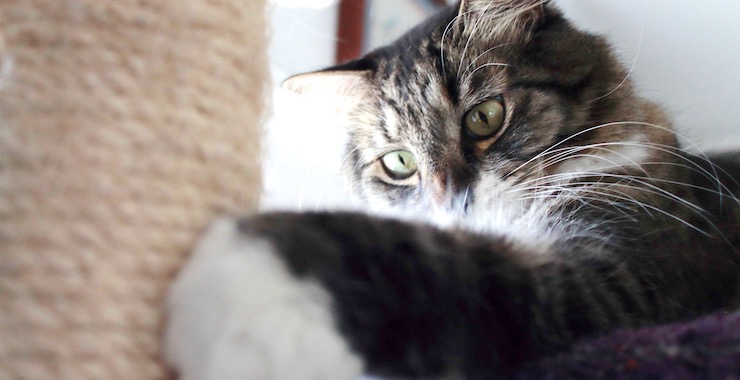

Tips to Help Stop Destructive Scratching
This post contains affiliate links and Meowtel will be compensated if you make a purchase after clicking on the links.
Does Fluffy or Oreo love to scratch the arms of your couch or the corners of a wall? Does it drive you absolutely insane? Maybe you live with a roommate and Oreo goes to town on Jenny’s bed post, and Jenny is upset. I hear you; it’s super frustrating. Don’t fret, though. I have some tips to help train (or re-train) Fluffy and Oreo to scratch where they are supposed to.
Did You Know?
Cats just love to scratch, and they do it for a multitude of reasons:
- Scratching allows for the dull, dead outer layer of the claw to shed exposing new, sharper claws
- It also serves as a type of exercise which helps stretch the upper body.
- It is often used as a sign of territory marking, especially in multi-cat households or if another cat is visible through a window. Like people, cats have individual smells. Unlike people, they have scent glands in their paws, which lets them leave behind their scent when they're scratching a surface.
Supply One Scratching Post Per Cat
Be sure you have one scratching post for Fluffy and one for Oreo. If Fluffy or Oreo have a particular place they like to scratch (like the couch arms or Jenny’s bed posts), put a scratching post right next to those places. There are multiple types of scratching posts on the market so it’s important to find out which one your cat likes. Cardboard and sisal rope are the most popular kinds as they feel the best. Your cat is able to get his or her claws in and really shred. Steer clear of carpet as it may be confusing to Oreo why this carpet is okay to scratch but the carpet on the ground isn’t.
It’s not a bad idea to have both a low, flat scratcher as well as a taller post scratcher. Fluffy may really be into scratching the carpet so a low, flat scratcher would be best for her. Meanwhile, Oreo loves those couch arms so he’ll likely prefer the taller post scratcher. Cats who love a good stretch need to have a post scratcher that is as tall as they are so that they can stretch out fully. (Why does Oreo like the taller kinds? Well, he likely is into yoga.) Regardless of what style or material, be sure that they are sturdy. Wobbly scratchers will likely hinder or even halt your training. Cats don’t want to be pushing against something and fall. They want to feel safe and secure.
Try Tin Foil, Double Sided Tape, Deterrent Spray, or a Plastic Runner
If your cat doesn’t take to the new scratchers immediately (which is totally normal), it's a good idea to start using items he or she may not enjoy on the no-go scratching surfaces. What do I mean? Well, if Oreo doesn’t stop going for those couch arms even though you have a scratcher on either side, try putting tin foil or double sided tape around the couch arms. It looks trashy, but Oreo likely won’t like the feel or sound of either, which will deter him from continuing to scratch where he shouldn’t. Plus, there are multiple deterrent sprays on the market. Sentry Stop That! is a great go-to. If you go this route, be sure to test on a hidden area like you would with a new skin care product or hair dye. Why? It’s always smart to test new products on an out of sight area in case there is a reaction to the product. If scratchers, sprays, tape, or tin foil (oh my!) don't work, Jackson Galaxy recommends using a plastic runner with the plastic spikes sticking up near the area in question. 1
When you’re trying to lure Fluffy and Oreo to their new scratchers, be sure to sprinkle catnip, hang a favorite toy from it, and make scratching noises on it. Catnip and toys can help trick your cat into coming over while the scratching sound can help get and keep their attention. It also shows them what they are supposed to do.
Be Sure to Keep Claws Trimmed
A very important piece of the scratching puzzle is to make sure Fluffy’s claws are trimmed. Cutting the sharp tip off will help eliminate damage done to furniture (or skin) and will also help ensure that she won’t get stuck in her scratching post. When claws aren't clipped, there's an increased chance they will get caught. This can be very scary for Fluffy if you aren’t around to free her. Not only could it hurt her, but it could also traumatize her from using the scratcher in the future.
When you’re cutting Fluffy’s nails, be sure to use sharp blades and only cut the tip off. Don’t go too far down toward the pink area where the blood vessels live. This area is known as the quick. Cutting too close to the quick will cause pain and possible bleeding. If you accidentally cut too close and Fluffy starts to bleed, be sure to "dip the claw in a bit of styptic powder or cornstarch or rub the nail across a dry bar of soap. Don't continue if they’re too upset, but keep an eye on them to make sure the bleeding stops.” 2 If you need help on how to cut Fluffy’s nails, The Humane Society has an article with step by step instructions or alternatively, Petco offers a tutorial video if you’re more of a visual person. If you can’t bring yourself to do it alone, you can have Fluffy’s nails cut either at your vet or by a groomer.
Try Nail Caps
If none of these options work for Fluffy, try using nail caps. Often times cat parents have groomers or vets put them on the first time but tend to take over the job after as it can get expensive quick. Nail caps are tiny plastic nail coverings that use adhesive to stick on Fluffy’s claws. They grow out as the nail grows and will need to be replaced often. There are different brands and designs so be sure to check reviews before purchasing if that’s the route you’d like to go.
If All Else Fails, Contact a Behaviorist
If you’ve tried everything on this list and have had no luck after 4 to 6 weeks, maybe it’s time to contact a professional behaviorist. There are three categories applicable to felines–Trainers, Applied Animal Behaviorists, and Veterinary Behaviorists–each with their own credentials. The ASPCA offers a very detailed and handy breakdown of what kind of professional help to seek. 3
If you’re in the middle of training (or re-training) Fluffy and Oreo when you’re heading out on vacation, be sure to let your Meowtel sitter know. Tell them everything you’ve been doing so that your sitter can be sure to keep Fluffy and Oreo on their track to scratching post success!
- Galaxy, Jackson and Hofve, Dr Jean. (2018). How To Stop Your Cats From Scratching Furniture. Retrieved from https://www.jacksongalaxy.com/blog/how-to-stop-your-cats-from-scratching-furniture
- Trimming a cat’s claws. Retrieved from https://www.humanesociety.org/resources/trimming-cats-claws
- Behavioral Help for Your Pet. Retrieved from https://www.aspca.org/pet-care/general-pet-care/behavioral-help-your-pet
Remington and his scratcher


